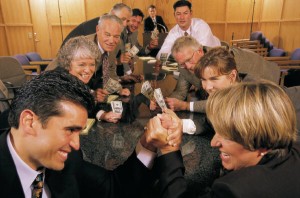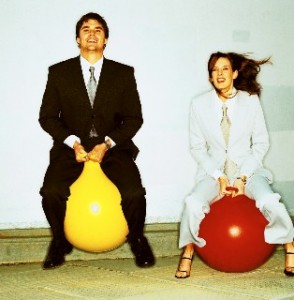The Game of Conflict: Rules, Reactions, Roles, Ramifications, and Rewards.
 Sometimes Twitter randomness can spark an idea that is worth exploring beyond 140 characters. Reading “A different way to game,” in which developer Jason Rohrer explains how video games can be used to challenge our perceptions of the world, followed by a Twitter conversation with @TriciaLewis, @idealawg, @CINERGYCoaching and @BenZiegler, led me to ponder a question of approaching conflict as a game.
Sometimes Twitter randomness can spark an idea that is worth exploring beyond 140 characters. Reading “A different way to game,” in which developer Jason Rohrer explains how video games can be used to challenge our perceptions of the world, followed by a Twitter conversation with @TriciaLewis, @idealawg, @CINERGYCoaching and @BenZiegler, led me to ponder a question of approaching conflict as a game.
When we say someone “is playing games,” it typically has a negative connotation of manipulating people. Yet, I would argue that every conflict has a game in it. Games excite the brain because they offer novelty, control, rituals, status enhancement and rewards – all things that our brains like. The game of conflict has its own components:
Rules are patterns of human behavior that can be either consciously encouraged or implicitly assumed by the participants in conflict. Rules are fundamental because our brains work like prediction machines, recognizing patterns, making predictions, and fine-tune expectations to better fit the outcomes. Clashing sets of rules increase the likelihood of tensions and misunderstandings. Parties may not even be aware of the patterns that govern their interactions as those patterns may be coping strategies or learned responses that are subconscious and automatic. Examples of such rules may be “Withdraw when feel offended” or “Defend the need to be perfect.” To manage conflict effectively, parties need to uncover those implicit rules and negotiate new more productive forms of engagement.
Rules prompt parties’ specific reactions. For example, the rule “Defend the need to be perfect” may cause someone to dismiss valuable critique or play safe and avoid challenging assignments. Reactions are observable while rules may not be obvious. In order to change their reactions, parties may have to become aware of the underlying rules first.
Playing by the rules often leads parties to assume certain roles, such as the victim, aggressor, skeptic, conformist, rebel, etc. The longer we play a particular role, the more familiar it becomes. Parties develop scripts and expectations around the roles they play. Their identities and the sense of self may become inseparable from their roles.
Parties’ behavior patterns in conflict have ramifications, or negative consequences. Damaged relationships, poor workplace morale and performance, personal unhappiness, and social isolation are all examples of ramifications in the game of conflict. Parties rarely choose these consequences on purpose, but they cannot disengage from them as long as the dysfunctional patterns continue.
Every repeated behavior also has its rewards. Anger or aggression, no matter how damaging, may be used as a way to gain autonomy and control. Assuming the mindset of a perpetual victim may absolve the party of the need to take responsibility for the situation or to change. It is important to understand what we gain from a pattern if we want to change it. Immediate gains are more appealing to the brain than long-term benefits. Parties may have to look for better ways to get the same benefits or trade the immediate reward for a different benefit.
The conflict management process allows parties to examine each component of the game of conflict and develop a new game with the desired goals and new behavior patterns in mind. The template of rules, reactions, roles, ramifications, and rewards can also be used in conflict management training to design conflict simulations and … games, of course.
What game components do you see in conflicts?

